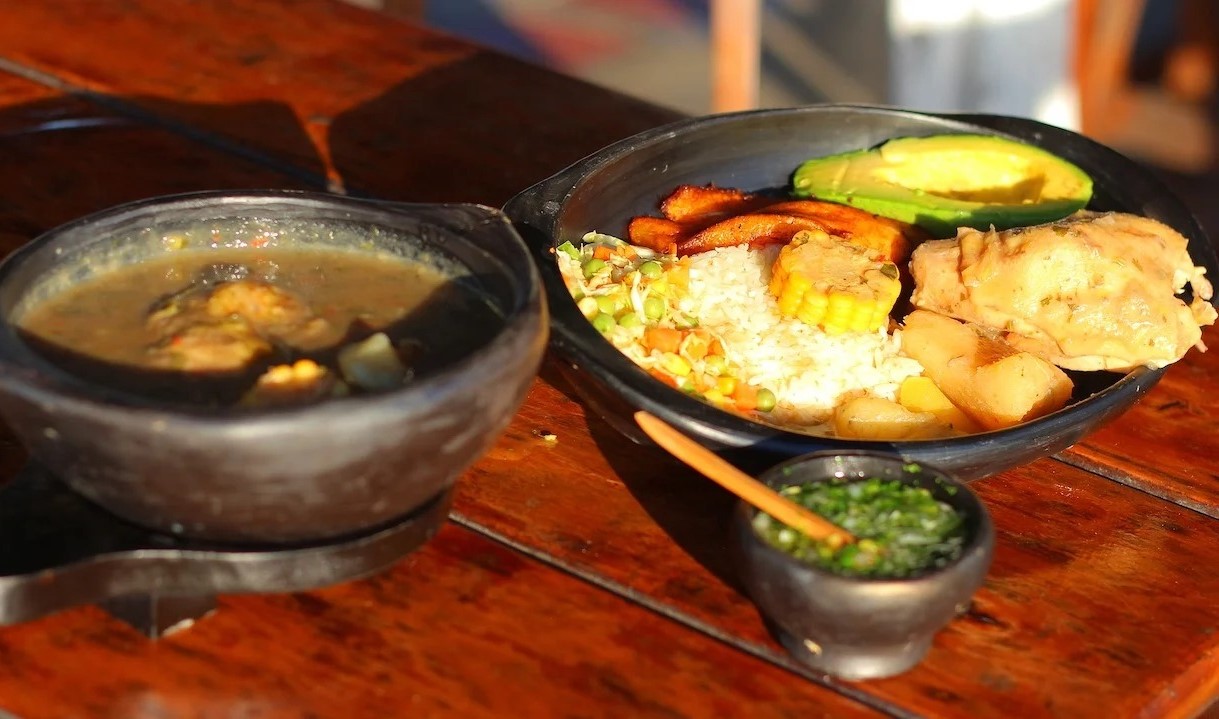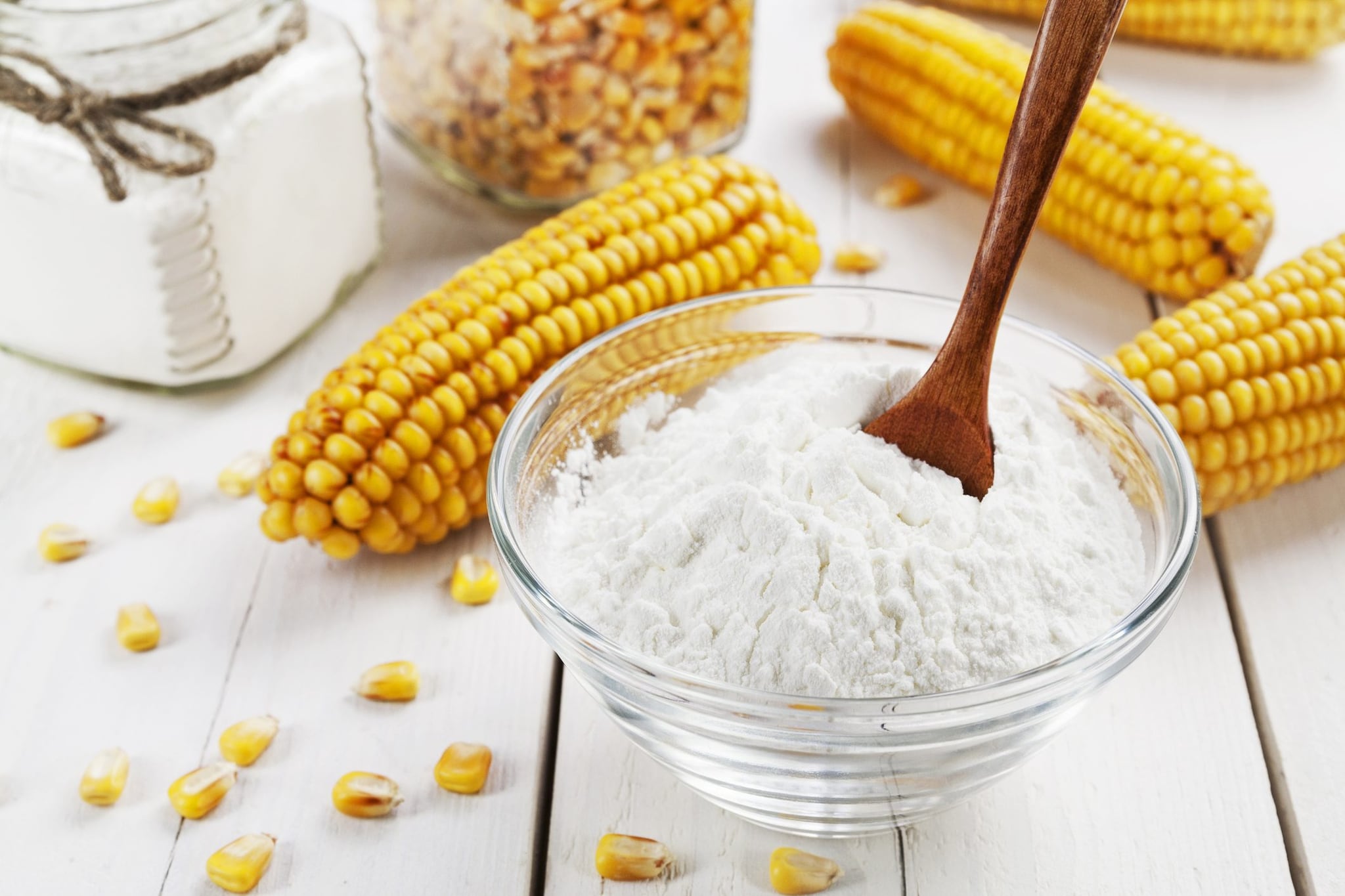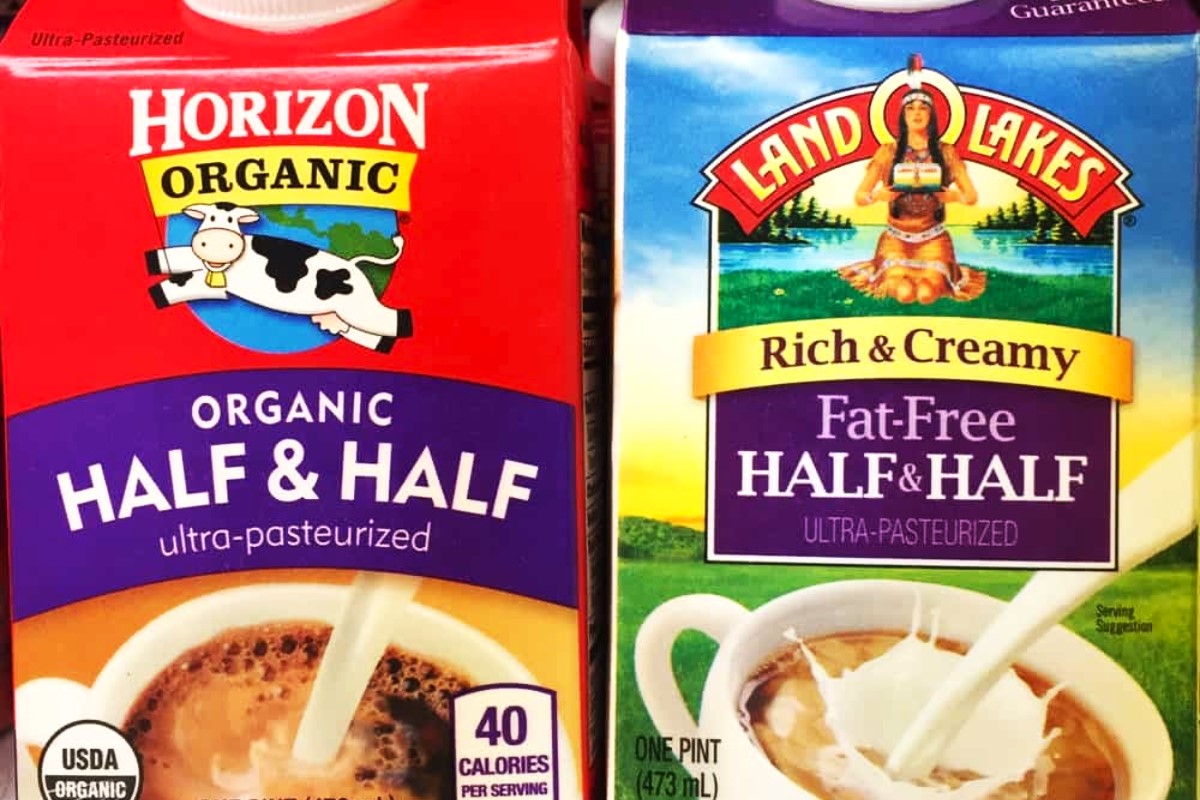Home>Food and Cooking>The Surprising Reason Why Panama’s Food Isn’t Famous In America


Food and Cooking
The Surprising Reason Why Panama’s Food Isn’t Famous In America
Published: February 8, 2024
Discover the untold story of Panama's cuisine and why it remains a hidden gem in America. Uncover the secrets of its flavorful dishes and culinary traditions. Explore the surprising reasons behind its lack of recognition in the US food scene.
(Many of the links in this article redirect to a specific reviewed product. Your purchase of these products through affiliate links helps to generate commission for Noodls.com, at no extra cost. Learn more)
Table of Contents
Introduction
When it comes to global cuisine, Panama often finds itself overshadowed by its more renowned culinary neighbors in Latin America. Despite boasting a rich tapestry of flavors and traditional dishes, Panama's food remains relatively unknown on the international stage, especially in the United States. This lack of recognition is a surprising phenomenon given the country's diverse culinary heritage, which draws influence from indigenous, African, Spanish, and Caribbean traditions. In this article, we will delve into the intriguing reasons behind the underappreciation of Panama's food in America and explore the factors contributing to this culinary oversight. Join us on a journey through the tantalizing flavors and cultural nuances of Panama's cuisine as we uncover the elements that have led to its underrepresentation on the global gastronomic map.
Panama's Culinary Diversity
Panama's culinary landscape is a captivating mosaic of flavors, reflecting the country's rich cultural heritage and diverse influences. From the hearty stews of the interior to the fresh seafood delights of the coastal regions, Panama's cuisine offers a tantalizing array of dishes that embody the fusion of indigenous, African, Spanish, and Caribbean culinary traditions.
One of the most iconic dishes that exemplifies Panama's culinary diversity is "sancocho," a traditional stew that varies in preparation across different regions of the country. This hearty dish typically features a medley of meats, such as chicken, beef, or pork, combined with a vibrant assortment of root vegetables, including yams, plantains, and ñame (yam). The result is a flavorful and comforting stew that serves as a cherished symbol of Panamanian culinary heritage.
In addition to sancocho, Panama's coastal areas boast an abundance of fresh seafood, inspiring dishes such as "ceviche" and "arroz con mariscos" (seafood rice). Ceviche, a zesty and refreshing dish, consists of raw fish or seafood marinated in citrus juices and mixed with onions, peppers, and cilantro. Meanwhile, arroz con mariscos showcases the coastal influence with its delectable combination of rice, seafood, and a harmonious blend of spices, creating a dish that captures the essence of Panama's maritime traditions.
Moreover, Panama's indigenous communities have contributed unique elements to the country's culinary tapestry, with dishes like "tamal de olla" and "guacho de mariscos" showcasing the fusion of native ingredients and cooking techniques. Tamal de olla, a traditional indigenous dish, features corn-based dough filled with savory meats and wrapped in banana leaves, resulting in a flavorful and aromatic delicacy. On the other hand, guacho de mariscos reflects the indigenous influence on coastal cuisine, combining seafood, coconut milk, and rice to create a dish that embodies the coastal flavors of Panama.
The culinary diversity of Panama extends beyond specific dishes to encompass a wide range of ingredients, cooking methods, and regional variations. From the lush highlands to the sun-kissed coastlines, Panama's culinary heritage is a testament to the country's vibrant cultural tapestry and the enduring influence of its diverse ethnic communities. This rich amalgamation of flavors and traditions makes Panama's cuisine a treasure trove of gastronomic delights, waiting to be discovered and celebrated on a global scale.
Lack of International Exposure
Despite its culinary richness, Panama's gastronomic offerings have struggled to gain widespread international exposure, particularly in the United States. This lack of visibility can be attributed to several interconnected factors that have contributed to the underrepresentation of Panamanian cuisine on the global stage.
One of the primary reasons for the limited international exposure of Panama's food is the relatively low presence of Panamanian restaurants and eateries in major global culinary hubs. Unlike the ubiquity of Mexican, Italian, or Chinese restaurants, authentic Panamanian dining establishments are notably scarce outside of Panama itself. This scarcity of dedicated Panamanian eateries diminishes the opportunities for global diners to experience and become familiar with the country's diverse culinary repertoire.
Furthermore, the absence of widespread culinary recognition can be linked to the limited availability of Panamanian ingredients and food products in international markets. Unlike the accessibility of ingredients from more globally recognized cuisines, such as Thai or French, the scarcity of Panamanian staples in supermarkets and specialty stores hinders the exploration and experimentation with Panamanian flavors in home kitchens around the world.
Another contributing factor to the lack of international exposure is the overshadowing effect of more prominent Latin American cuisines, such as Mexican, Peruvian, and Brazilian, which have garnered widespread acclaim and recognition on the global culinary stage. The dominance of these cuisines in the international dining scene has inadvertently relegated Panamanian cuisine to the periphery, resulting in a lack of visibility and awareness among global food enthusiasts and consumers.
Moreover, the limited representation of Panamanian cuisine in mainstream media and popular culinary platforms has further contributed to the lack of international exposure. Unlike the extensive coverage and promotion enjoyed by other cuisines, the absence of dedicated culinary showcases, cooking shows, and media features focusing on Panamanian food has hindered its visibility and recognition among global audiences.
The combination of these factors has resulted in a paradoxical situation where Panama's culinary diversity remains a well-kept secret, awaiting the opportunity to be discovered and appreciated by a wider global audience. Despite the challenges posed by the lack of international exposure, the tantalizing flavors and cultural significance of Panamanian cuisine continue to beckon for greater recognition and celebration on the world's culinary stage.
Cultural Differences in Taste Preferences
Cultural nuances play a pivotal role in shaping taste preferences, and this holds true when examining the underappreciation of Panama's food in America. The divergence in culinary preferences between the two nations reflects a complex interplay of cultural, historical, and geographical factors that have influenced the evolution of their respective gastronomic traditions.
In the context of taste preferences, it's essential to recognize the diverse culinary heritage of the United States, which has been shaped by centuries of immigration and cultural assimilation. The American palate has been deeply influenced by a wide array of global cuisines, resulting in a culinary landscape that embraces flavors from around the world. This openness to diverse culinary influences has contributed to the widespread popularity of cuisines such as Italian, Chinese, and Mexican in the United States, reflecting the country's receptiveness to a broad spectrum of taste profiles.
On the other hand, Panama's taste preferences are rooted in a unique blend of indigenous, African, Spanish, and Caribbean culinary traditions, each contributing distinct flavors and cooking techniques to the country's gastronomic tapestry. The resulting flavor profiles, characterized by a harmonious interplay of spices, tropical fruits, and indigenous ingredients, reflect the country's rich cultural diversity and historical legacies. However, the nuanced and diverse nature of Panamanian flavors may present a contrast to the more familiar taste preferences prevalent in the American culinary landscape.
Furthermore, the historical context of culinary exchange and influence has also shaped the divergence in taste preferences between Panama and the United States. The legacy of colonialism, transatlantic trade routes, and cultural exchange has contributed to the development of distinct flavor profiles in each region. While the United States has been a melting pot of culinary influences from around the world, Panama's flavors have evolved within the context of its unique historical and cultural dynamics, resulting in a culinary identity that reflects the country's specific historical narratives and cultural amalgamation.
The interplay of these cultural differences in taste preferences underscores the intricate relationship between food, culture, and identity. As such, the underappreciation of Panama's food in America can be attributed, in part, to the variations in taste preferences shaped by the diverse cultural and historical contexts of the two nations. Understanding and appreciating these cultural differences is essential in fostering a greater recognition and celebration of Panama's culinary heritage on the global stage.
The Role of Marketing and Promotion
The underrepresentation of Panama's culinary treasures on the global stage can also be attributed to the pivotal role of marketing and promotion in shaping the visibility and recognition of a country's cuisine. While Panama boasts a diverse and tantalizing array of traditional dishes and culinary heritage, the lack of strategic marketing efforts and promotional initiatives has contributed to its limited presence in the international culinary landscape.
Effective marketing and promotion play a crucial role in introducing and popularizing a country's cuisine to global audiences. In the case of Panama, the absence of dedicated marketing campaigns and culinary promotions has hindered the dissemination of its gastronomic offerings beyond its borders. Unlike the proactive promotion of cuisines from other Latin American countries, such as the vibrant campaigns showcasing Mexican or Peruvian cuisine, Panama's culinary treasures have remained relatively unheralded on the global culinary stage.
Furthermore, the role of culinary tourism and gastronomic experiences cannot be overlooked in the context of marketing and promotion. While countries renowned for their culinary prowess often leverage culinary tourism as a means to showcase their gastronomic heritage, Panama's potential as a culinary destination remains underexplored. The development of culinary tours, food festivals, and immersive dining experiences can serve as powerful tools to introduce global travelers and food enthusiasts to the rich tapestry of Panamanian cuisine, thereby enhancing its visibility and appeal on the international stage.
Moreover, the digital era presents unprecedented opportunities for the promotion of culinary traditions, with social media, food blogs, and online platforms serving as influential channels for showcasing and celebrating global cuisines. However, the underutilization of digital marketing strategies and online culinary content has contributed to the limited exposure of Panama's gastronomic delights in the virtual sphere. By harnessing the power of digital marketing and leveraging engaging culinary content, Panama can amplify the reach and impact of its culinary narrative, captivating global audiences and igniting their curiosity about the country's diverse flavors and culinary traditions.
In essence, the role of marketing and promotion is integral in elevating the visibility and recognition of Panama's food on the global culinary stage. By strategically leveraging culinary tourism, digital marketing, and targeted promotional initiatives, Panama can unlock the potential of its rich gastronomic heritage, inviting the world to savor the captivating flavors and cultural nuances of its culinary tapestry. Through proactive marketing efforts and strategic promotion, Panama's culinary treasures can transcend borders, captivating the palates and imaginations of global food enthusiasts, and securing their well-deserved place in the global gastronomic spotlight.
Conclusion
In conclusion, the underappreciation of Panama's food in America is a complex interplay of cultural, historical, and promotional factors that have contributed to its limited recognition on the global culinary stage. Despite boasting a rich and diverse culinary heritage, Panama's gastronomic treasures have remained relatively undiscovered and underrepresented in the United States and beyond.
The culinary diversity of Panama, shaped by indigenous, African, Spanish, and Caribbean influences, offers a tantalizing array of flavors and traditional dishes that reflect the country's vibrant cultural tapestry. From the hearty stews of the interior to the fresh seafood delights of the coastal regions, Panama's cuisine is a testament to the fusion of diverse culinary traditions, resulting in a rich tapestry of flavors and culinary techniques waiting to be celebrated on a global scale.
The lack of international exposure, limited representation in mainstream media, and the overshadowing effect of more prominent Latin American cuisines have contributed to the underappreciation of Panama's food. Additionally, cultural differences in taste preferences, influenced by historical and geographical factors, have shaped the divergence in culinary appreciation between Panama and the United States.
Furthermore, the role of marketing and promotion emerges as a critical determinant in shaping the visibility and recognition of a country's cuisine. The absence of proactive marketing campaigns, culinary promotions, and the underutilization of digital marketing strategies have hindered the dissemination of Panama's gastronomic offerings beyond its borders, limiting its presence in the international culinary landscape.
Despite these challenges, the culinary richness of Panama beckons for greater recognition and celebration on the global stage. Strategic initiatives focusing on culinary tourism, digital marketing, and targeted promotional campaigns can serve as powerful tools to introduce global audiences to the captivating flavors and cultural nuances of Panama's culinary heritage.
In essence, the underappreciation of Panama's food in America underscores the need for a concerted effort to elevate its visibility and recognition on the global culinary stage. By embracing the country's diverse culinary heritage, celebrating its unique flavors, and leveraging strategic marketing and promotional initiatives, Panama's gastronomic treasures can transcend borders, captivating the palates and imaginations of global food enthusiasts, and securing their well-deserved place in the global gastronomic spotlight.














